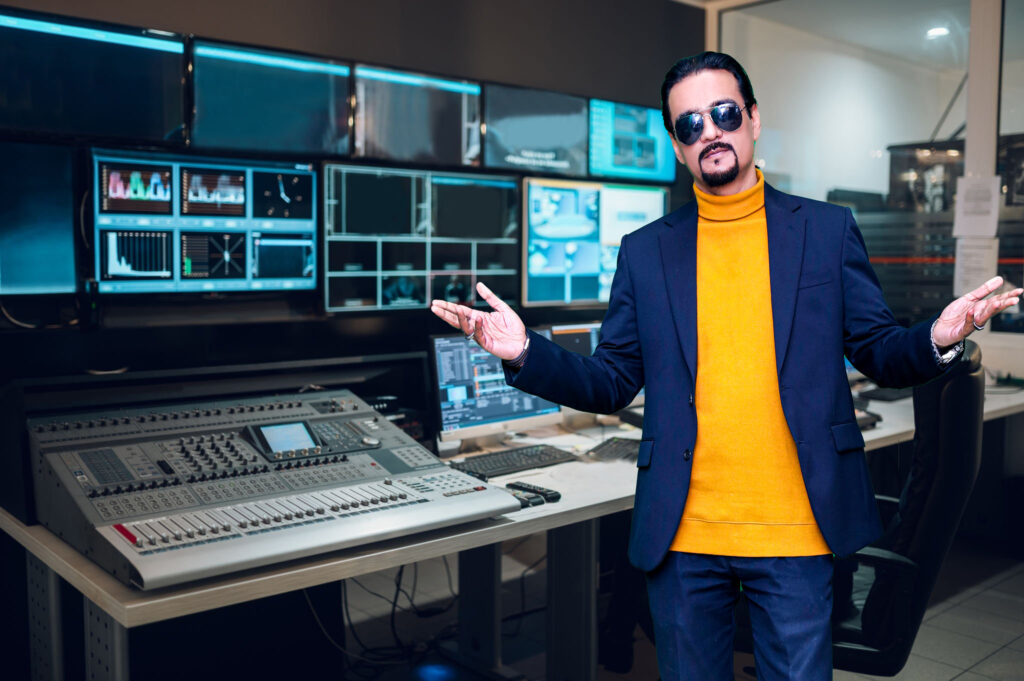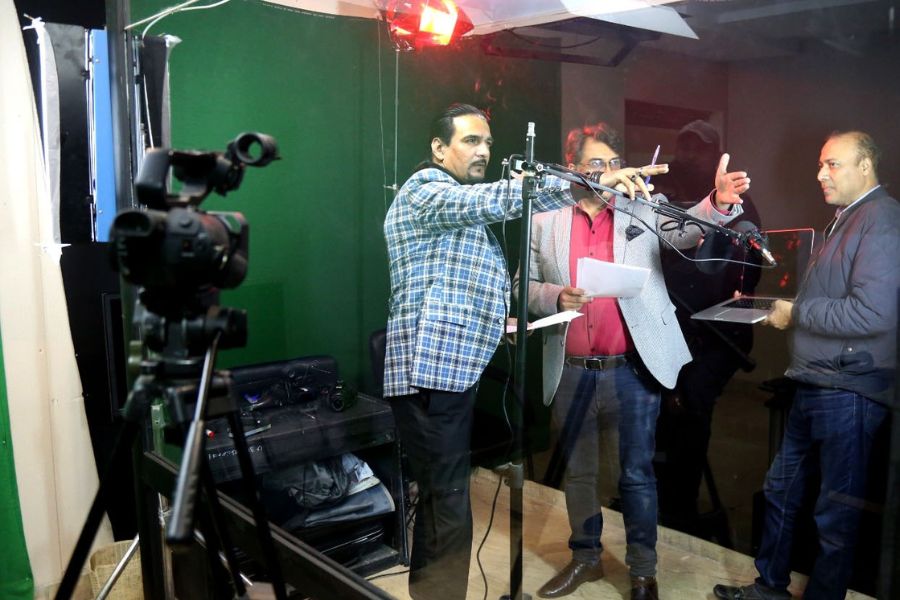Table of Contents
Hey there, fellow filmmakers! Ahmed Afridi here, and today I’m thrilled to share with you some of the essential filmmaking techniques that I’ve learned throughout my career. Whether you’re just starting out or looking to elevate your filmmaking game, these tips and tricks will help you shoot like a pro and bring your creative vision to life on the big screen.
1. Introduction to Filmmaking Techniques
Importance of Mastering Filmmaking Techniques
Let’s kick things off by talking about why mastering filmmaking techniques is so important. As filmmakers, our ultimate goal is to tell captivating stories that resonate with audiences. And to do that effectively, we need to have a solid grasp of the technical aspects of filmmaking, from camera operation to lighting to editing.
2. Understanding Camera Basics

Choosing the Right Camera
One of the first decisions you’ll need to make as a filmmaker is choosing the right camera for your project. Whether you’re shooting a short film, a documentary, or a music video, selecting the right camera can make all the difference in the world. Personally, I’m a big fan of the Sony A7S III for its incredible low-light performance and versatile shooting capabilities.
Mastering Camera Settings
Once you’ve got your hands on the perfect camera, it’s time to dive into the nitty-gritty of camera settings. Understanding concepts like aperture, shutter speed, and ISO will allow you to take full control of your camera and capture the perfect shot every time.
3. Composition and Framing
Rule of Thirds
With regards to creation, the standard of thirds is your closest companion. By dividing your frame into thirds both horizontally and vertically, you can create visually appealing compositions that draw the viewer’s eye to the most important elements in your scene.
Framing Techniques
In addition to the rule of thirds, mastering framing techniques like leading lines and framing within a frame can add depth and dimension to your shots. Take, for example, this scene from Christopher Nolan’s “Inception,” where the use of framing within a frame creates a sense of visual complexity and intrigue.
Importance of Visual Storytelling
At the end of the day, filmmaking is all about storytelling. And visual storytelling, in particular, is a powerful tool for conveying emotion, mood, and meaning without saying a single word. Whether you’re using composition, lighting, or camera movement, always keep the story front and center in your mind.
4. Lighting Essentials
Natural vs Artificial Lighting
When it comes to lighting your scenes, you have two main options: natural light or artificial light. Personally, I love using natural light whenever possible for its soft, flattering quality. But when shooting indoors or at night, artificial lighting can give you greater control over the mood and atmosphere of your scene.
Three-Point Lighting Setup
One of the most basic yet effective lighting setups in filmmaking is the three-point lighting setup. By positioning a key light, fill light, and backlight around your subject, you can create a beautifully balanced image with just the right amount of light and shadow.
Creating Mood with Lighting
Don’t underestimate the power of lighting to set the mood of your scene. Whether you’re going for a warm, cozy vibe or a cool, eerie atmosphere, the color temperature, intensity, and direction of your light can make all the difference in creating the perfect mood for your story.
5. Audio Techniques
Importance of Good Sound
As they say, audio is half the picture. Even the most visually stunning film can fall flat if the sound quality isn’t up to par. That’s why it’s crucial to invest in high-quality audio equipment and pay close attention to sound recording and mixing during production.
Types of Microphones
When it comes to capturing sound on set, there are a variety of microphone options to choose from. Shotgun mics, lavalier mics, and boom mics each have their own strengths and weaknesses, so be sure to choose the right mic for your specific shooting situation.
Recording Quality Audio on Set
In addition to selecting the right microphone, proper microphone placement and sound recording techniques are essential for capturing clean, clear audio on set. Be sure to monitor your audio levels and minimize background noise to ensure that your dialogue is crystal clear.
6. Movement and Camera Techniques
Importance of Camera Movement
Camera movement can add dynamism and energy to your shots, helping to engage the viewer and enhance the storytelling experience. Whether it’s a smooth tracking shot or a dramatic crane shot, mastering camera movement techniques allows you to convey emotion and perspective in your films.
Types of Camera Movements
There are countless ways to move the camera in filmmaking, each with its own unique effect on the viewer. From pans and tilts to dolly shots and aerial shots, understanding when and how to use different camera movements can elevate your storytelling and create visually stunning sequences.
Utilizing Stabilizers and Rigs
To achieve smooth and steady camera movement, filmmakers often rely on stabilizers and rigs like tripods, sliders, and gimbals. These tools help minimize camera shake and ensure that your shots are steady and professional-looking, even in challenging shooting conditions.
7. Editing Tips and Tricks

Importance of Post-Production
Once you’ve captured all of your footage, it’s time to dive into the world of post-production. Editing is where the magic happens, where raw footage is transformed into a polished, cohesive narrative that captivates and entertains audiences.
Software Recommendations
When it comes to editing software, there are plenty of options to choose from. Personally, I swear by Adobe Premiere Pro for its intuitive interface and powerful editing tools. But whether you prefer Premiere, Final Cut Pro, or DaVinci Resolve, the most important thing is to find a program that works for you and your workflow.
Editing for Storytelling
At the end of the day, editing is all about storytelling. Every cut, transition, and effect should serve the overarching narrative of your film, guiding the viewer through the story and evoking emotion along the way. So don’t be afraid to experiment with different editing techniques until you find the perfect rhythm for your film.
8. Color Grading
Enhancing Visual Appeal
Color grading is the final step in the post-production process, where the look and feel of your film are fine-tuned to perfection. Whether you’re going for a naturalistic aesthetic or a stylized, cinematic look, color grading allows you to enhance the visual appeal of your film and create a cohesive visual style.
Creating Mood Through Color
Color plays a powerful role in evoking emotion and setting the tone of a film. By manipulating the color palette, saturation, and contrast, you can create subtle shifts in mood and atmosphere that enhance the overall impact of your story.
Software Tools for Color Grading
When it comes to color grading software, there are plenty of options available, from industry-standard programs like Adobe SpeedGrade to open-source alternatives like Blender. Personally, I’m a big fan of DaVinci Resolve for its robust color grading tools and intuitive workflow.
9. Special Effects and CGI
Introduction to Special Effects
Special effects are visual techniques used to create illusions or enhance reality in filmmaking. Whether you’re adding practical effects like makeup and prosthetics or digital effects like CGI and green screen compositing, understanding how to incorporate special effects can add depth and excitement to your films.
Incorporating CGI into Your Films
With advancements in technology, CGI has become an integral part of modern filmmaking, allowing filmmakers to create breathtaking visual effects and immersive worlds. Whether you’re adding fantastical creatures, epic battle scenes, or futuristic landscapes, CGI opens up endless possibilities for creative storytelling.
Tools and Software for Special Effects
When it comes to creating special effects and CGI, having the right tools is crucial. From industry-standard software like Autodesk Maya to open-source alternatives like Blender, there are plenty of options available to suit your budget and workflow.
10. Continuity and Script Supervision
Importance of Continuity
Continuity refers to maintaining consistency in visual elements from shot to shot, scene to scene, and take to take. Whether it’s matching the placement of props and actors or ensuring continuity in wardrobe and makeup, maintaining consistency is essential for creating a seamless viewing experience.
Role of Script Supervisor
The script supervisor plays a crucial role in ensuring continuity on set, keeping track of script changes, continuity notes, and shot details. By working closely with the director and production team, the script supervisor helps maintain consistency and accuracy throughout the production process.
Tips for Maintaining Continuity on Set
From creating detailed shot lists and storyboards to conducting thorough rehearsals and walkthroughs, there are plenty of strategies for maintaining continuity on set. By paying attention to detail and being proactive in addressing potential continuity issues, filmmakers can ensure a smooth and seamless production process.
11. Working with Actors
Building Rapport with Actors
Effective communication and collaboration between directors and actors are essential for creating authentic and compelling performances. By building rapport, providing feedback, and creating a supportive environment on set, directors can help actors feel comfortable and confident in their roles, leading to more nuanced and emotive performances.
Directing Techniques
Directing actors requires a combination of technical skill, empathy, and intuition. From guiding performance choices to providing motivation and direction, directors play a crucial role in shaping the emotional arc of a scene and bringing characters to life on screen.
Creating Believable Performances
In addition to coaching actors through rehearsals and blocking, directors must also create an environment where actors feel safe to explore and take risks. By fostering trust and collaboration, directors can encourage actors to tap into their creativity and deliver performances that resonate with audiences.
12. Legal and Copyright Considerations
Understanding Copyright Laws
Copyright laws govern the use of intellectual property, including scripts, music, and artwork, in filmmaking. It’s essential for filmmakers to understand their rights and obligations regarding copyright, including obtaining permission to use copyrighted material and protecting their own intellectual property.
Obtaining Necessary Permits
Depending on the location and nature of your shoot, you may need to obtain permits or permissions from local authorities, property owners, or governing bodies. From filming in public spaces to using drones or special effects, securing the necessary permits ensures that your production complies with legal regulations and avoids potential fines or disruptions.
Protecting Your Intellectual Property
In addition to respecting the rights of others, filmmakers must also take steps to protect their own intellectual property. This may include registering scripts with copyright offices, drafting contracts with cast and crew, and securing distribution rights for their films, safeguarding their creative work and financial interests.
13. Budgeting and Resource Management
Working Within Budget Constraints
Filmmaking is often a labor of love, but it’s also a business with financial considerations. Whether you’re working with a shoestring budget or a sizable production budget, effective budgeting and resource management are essential for maximizing the impact of your film while minimizing unnecessary expenses.
Allocating Resources Effectively
From securing funding and hiring crew to renting equipment and securing locations, there are plenty of expenses involved in filmmaking. By prioritizing essential resources and finding creative solutions to budget constraints, filmmakers can stretch their resources further and achieve professional results without breaking the bank.
Tips for Low-Budget Filmmaking
Even with limited resources, aspiring filmmakers can still create compelling and visually stunning films. By focusing on storytelling, leveraging available resources, and embracing constraints as creative opportunities, filmmakers can turn limitations into strengths and produce remarkable work on a modest budget.
14. Marketing and Distribution

Promoting Your Film
Once your film is complete, the next step is to get it in front of as many eyeballs as possible. That’s where marketing comes in. Whether you’re promoting your film online, at film festivals, or through traditional media channels, effective marketing can generate buzz, build anticipation, and attract viewers to your film.
Finding Distribution Channels
In addition to self-distribution and online platforms, filmmakers may also explore traditional distribution channels such as theaters, television, and streaming services. By partnering with distributors or sales agents, filmmakers can reach larger audiences and secure distribution deals that maximize the reach and profitability of their films.
Building an Audience
Building an audience is an ongoing process that requires engagement, interaction, and authenticity. By cultivating a community around your film through screenings, Q&A sessions, and behind-the-scenes content, filmmakers can foster loyalty and enthusiasm among fans, ensuring continued support for future projects.
Conclusion
In conclusion, mastering essential filmmaking techniques is the key to shooting like a pro. From understanding camera basics and composition to mastering lighting, sound, and editing, each aspect of the filmmaking process plays a crucial role in creating compelling and visually stunning films. By honing your skills, embracing creativity, and staying true to your artistic vision, you can take your filmmaking to the next level and captivate audiences around the world.
THE FILMMAKING PROCESS FOR BEGINNERS Read More.
FAQs
1. What equipment do I need to get started with filmmaking?
While having professional-grade equipment can enhance the quality of your films, you can still create compelling content with more affordable options such as DSLR cameras and entry-level audio equipment. The most important thing is to focus on storytelling and creativity, regardless of your budget or equipment limitations.
2. How can I improve my cinematography skills?
Improving your cinematography skills requires practice, experimentation, and a willingness to learn. Study the work of master cinematographers, analyze films for their visual storytelling techniques, and practice shooting and editing your own projects to hone your craft.
3. What are some common mistakes to avoid in filmmaking?
Some common mistakes to avoid in filmmaking include poor audio quality, shaky camera work, inconsistent lighting, and sloppy editing. Paying attention to detail, planning your shots carefully, and seeking feedback from peers can help you avoid these pitfalls and produce professional-quality films.
4. How can I finance my independent film project?
Financing an independent film project can be challenging, but there are various options available, including crowdfunding, grants, investors, and personal savings. It’s essential to create a realistic budget, develop a compelling pitch, and explore multiple funding sources to secure the necessary funds for your film.

